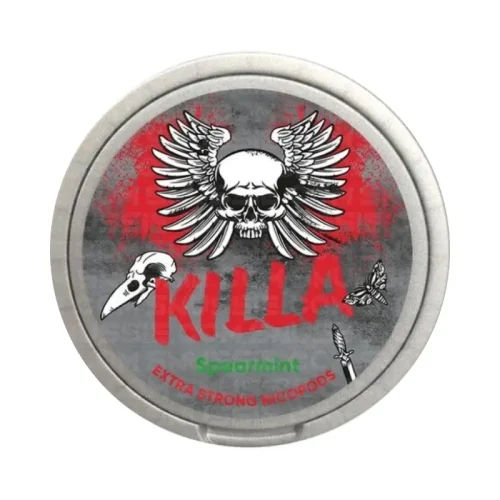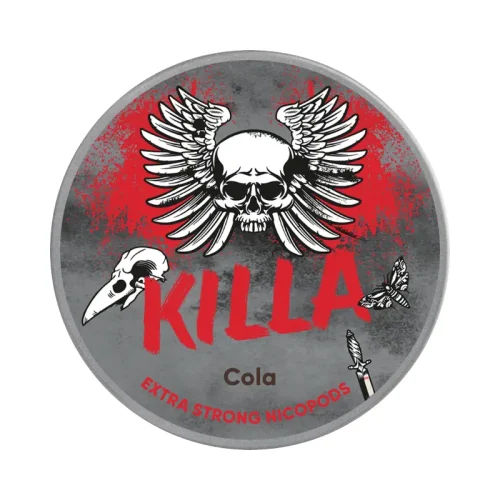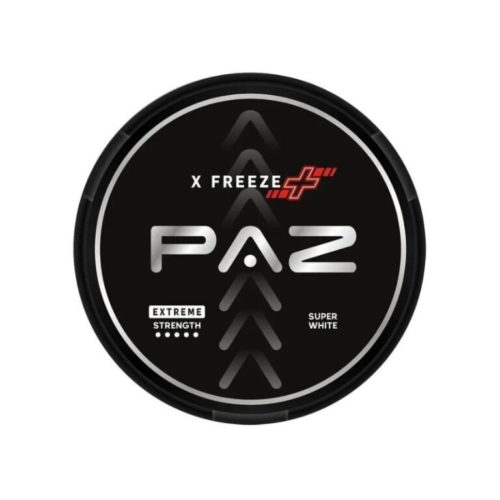With the multitude of health risks associated with traditional tobacco products, more and more people are turning to nicotine pouches and vapes as safer alternatives. These products reduce the risk of smoking-related diseases, such as lung cancer, coronary heart disease, stroke, and emphysema.
Recent studies indicate that nicotine pouches have grown more popular in the U.S. as an alternative form of nicotine consumption, with unit sales increasing by sixfold between 2019 and 2022. Another study from the National Health Interview Survey conducted in 2021 shows a similar pattern when it comes to the use of vapes among adults aged 18 to 44.
In this article, we’ll take a closer look at nicotine pouches vs. vaping to see how they compare across different categories and help you choose the option that best meets your needs.
Nicotine Pouches vs. Vaping—Differences in Nicotine Delivery
Even though nicopods and vapes both provide you with your dose of nicotine and keep the nicotine cravings at bay, they use completely different methods to achieve this purpose. The following sections outline the differences between nicotine pouches and vaping devices and explain how they deliver nicotine to their users.
What Are Nicotine Pouches?
Nicotine pouches, also known as white snus and nicopods, are tobacco-free, nicotine-based products that typically contain nicotine, flavorings, and plant-based fibers.
Nicopods are packed in small, discrete plastic or metal cans, with one can typically containing 15–25 pouches. Depending on your habits and tolerance to nicotine, a pack will usually last one to two days. They have a long best-before date, typically one year from their production date.

Via: Swenico
Using nicotine pouches is easy:
- Open the lid and remove a pouch with your thumb and index finger
- Place the pouch between your gum and upper lip
- Let it sit there for 5 to 30 minutes, depending on your preference and nicotine tolerance
- Take the pouch out of your mouth and dispose of it
When in your mouth, the contents of the pouch get moistened by your saliva, allowing the nicotine to enter your bloodstream through the mucous membrane. Try not to swallow a nicotine pouch as doing so can upset your stomach and increase the risk of nicotine poisoning, which constitutes a medical emergency.
What Is Vaping?
A vape, or an electronic cigarette, is a handheld device used to breathe in vapor containing nicotine into your lungs. Vapes come in many different forms to accommodate various needs and styles of vaping.
Check out the most popular ones in the following table:
| Disposable vapes | Disposable vapes are beginner-friendly single-use devices that come pre-filled with e-liquid. They are designed to be discarded when they run out of e-liquid |
| Vape pods | Vape pods are made of two parts—a rechargeable battery and a refillable pod. They’re smaller in size and intended for multiple use |
| Vape mods | Vape mods are larger in size to accommodate a bigger battery and come with advanced features, like variable wattage and temperature control |
| Pod mods | Pod mods fall somewhere in between vape pods and vape mods. They combine the advanced features of a vape mod and the convenience of a vape pod |
Most vapes have a rechargeable battery as a power source to heat the coil that vaporizes the e-liquid, so they must be recharged every time their battery runs out. Nicotine pouches are a more convenient option since you don’t have to charge or maintain them.

Via: Isorepublic
E-liquid, also called e-juice, is crucial to the vaping experience. The common compounds of an e-liquid include nicotine, propylene glycol (PG), vegetable glycerin (VG), and various flavorings that give it its scent and aroma. PG and VG form the base of the e-liquid and are mixed at different ratios to control the amount of throat hit, flavor, and vapor.
Vaping doesn’t involve combustion like traditional smoking. Still, vaping devices create temperatures of over 375 °F (190 °C) to vaporize the e-liquid. This causes chemical reactions that can produce a number of hazardous chemicals. With nicotine pouches, no heating is required, which makes them a safer option for nicotine consumption.
Nicotine Pouches vs. Vaping—Which Gives a Stronger Nicotine Hit?
When you vape, nicotine enters your bloodstream through your lungs, so the absorption occurs rapidly, and you start to feel its effects quickly. The average time for nicotine to reach maximum concentration in your blood when vaping is around 11.5 minutes.

Via: Eko Aldi Romadhan
Nicotine levels in e-liquids can range from 0 mg to over 50 mg/mL, and the nicotine used in e-juice can come in two forms:
- Freebase nicotine e-liquids—They come at lower nicotine strengths and are suitable for vapers who want to lower their nicotine intake
- E-juices based on nicotine salts—They usually contain higher doses of nicotine but can deliver a smooth hit even at higher nicotine levels.
The table below gives a summary of these two vape liquid types:
| Category | Freebase Nicotine | Nicotine Salts |
| Absorption | Has a slower absorption rate | Absorbed faster into the bloodstream |
| Harshness | Harsh at higher dosages | Smooth even at higher dosages |
| Nicotine strength | Typically comes in lower strengths, ranging from 3–18 mg/mL | Generally available in higher doses, ranging from 20 mg/mL and above |
Nicotine Pouches—Mechanism of Action
Nicopods work differently when it comes to nicotine absorption. Since nicotine is absorbed through the mucous membrane, the onset is gradual, but the effects last longer compared to vaping.
The table below shows the typical sequence of events when using a nicotine pouch:
| Timeline | What Happens? |
| 0–5 minutes | The nicotine pouch is moistened by your saliva and begins to release nicotine and flavors that are absorbed by your mucous membrane |
| 5–10 minutes | Nicotine begins to circulate in your body, and your craving begins to subside |
| 10–20 minutes | By now, most of the nicotine in the pouch has entered your bloodstream |
| 30–40 minutes | The nicotine level reaches its peak, leaving you feeling satisfied |
| 2–3 hours | Nicotine levels in your blood drop, and the craving returns |
A regular cigarette contains around 13 mg of nicotine, but you consume only 1.1–1.8 mg of nicotine from a single stick. Nicotine strength in pouches varies between 1.5 mg to 50 mg of nicotine. Around 10% to 20% of the nicotine content is absorbed into your bloodstream.
Nicotine Pouches vs. Vaping—Convenience and Public Perception
In this category, nicotine pouches are the clear winner. They don’t produce combustion, smoke, or vapor, so you can use them in public places, offices, restaurants, planes, etc. Since they are odorless, they don’t leave the lingering smell of tobacco or vape aroma that can bother people around you.
Unlike nicotine pouches, you cannot use vapes in public places because they produce a considerable amount of vapor, which some people find unpleasant and off-putting.
Getting the Most Value for Your Money
When it comes to pricing, nicotine pouches have the advantage. The price for one can, containing 15 to 25 pouches, ranges between 3 and 6 USD.
With vaping, you have the initial cost of the device, which can range between 4 and 200 USD, depending on the type of the device. Unless you go for disposable devices, you’ll have to consider the cost of replacing your coils every week or two, as well as the ongoing expense of buying e-liquids to refill your device.
Switching From Vaping to Nicotine Pouches
Since nicotine pouches offer a range of nicotine levels, you can use them to lower your nicotine intake and go smoke-free.
It is important to note that nicotine pouches aren’t approved by the FDA as a nicotine replacement therapy. Instead, the FDA recommends using other less harmful alternatives to eliminate your nicotine dependence, such as:
- Nicotine patches
- Nicotine gum
- Lozenges
- Nicotine spray
- Nicotine inhalers
- Varenicline tartrate
- Bupropion hydrochloride
Where Can You Buy Premium Nicotine Pouches?
It’s crucial to buy nicotine pouches from reputable vendors that sell high-quality products from trusted and reliable manufacturers.

Via: SnusBoss
SnusBoss offers top-notch nicotine pouches made in the EU, guaranteeing superior quality and freshness. The company is led by a team of industry experts who have been involved in distributing high-quality nicotine products for years. Every item has been thoroughly tested and analyzed to ensure that you get a superior product made of pharmaceutical- and food-grade ingredients.
SnusBoss offers a wide range of nicotine pouches from various brands, available in multiple strengths and flavors at affordable prices, such as:
To place an order from SnusBoss, follow these steps:
- Visit the SnusBoss online store
- Choose your preferred brand, strength, and flavor
- Enter your shipping and payment info
SnusBoss also offers express shipping, so your shipment can be delivered to your doorstep in 2–3 business days.
Vaping vs. Nicopods—Comparison of Health Risks
While vaping and nicotine pouches are considered safer than smoking, neither of these methods is completely risk-free. Both products contain nicotine, which, while not carcinogenic, is highly addictive. There are currently no studies that explain the long-term effects of nicotine pouches and vaping because these forms of nicotine consumption are relatively new.
Side Effects of Nicotine Pouches
The Snus Commission of Sweden reports that nicotine pouches cause 7.8 additional cases of cancer per 100,000 people, showing that the connection between nicotine pouches and cancer isn’t statistically significant. According to the data, nicopods are one of the least harmful forms of nicotine consumption.
Despite that, nicotine pouches can also have several side effects. These include:
- Elevated heart rate and blood pressure
- Nausea and vomiting
- Headaches and dizziness
- Hiccups
- Heartburn
- Irritation of the gums
- Dry mouth
Risks and Side Effects of Vaping
Researchers have identified several toxic chemicals and heavy metals in the vapor of an e-cigarette, some of which are known to cause cancer. The table below reports their findings:
| Acetaldehyde and formaldehyde | Highly toxic and carcinogenic organic compounds |
| Acrolein | A highly toxic chemical used as a herbicide |
| Benzene | A toxic chemical that can cause leukemia |
| Cadmium | A toxic metal that can cause chronic obstructive pulmonary disease and emphysema |
| Diacetyl | A chemical compound that can cause chronic obstructive pulmonary disease, lung injury, and asthma |
| Diethylene glycol | An odorless liquid that is linked to lung disease |
| Nickel, tin, lead, and other heavy metals | Heavy metals that can damage the lungs, brain, liver, kidneys, etc. |
When it comes to vaping, commonly reported side effects include:
- Elevated heart rate and blood pressure
- Shortness of breath
- Headache
- Coughing
- Nausea
- Teeth stains and discoloration
- Dry throat and mouth
- A diminished sense of taste, also known as a vaper’s tongue
In addition to the risks and side effects listed above, keep in mind that nicotine is addictive. If you’ve never used nicotine-based products before, you should stay away from them. Nicotine also shouldn’t be consumed by the following groups:
- Minors (under 21)
- Women who are pregnant or breastfeeding
- People with a history of cardiovascular problems
- People recovering from a tooth extraction
Featured Image Source: StingFree / E-Liquids UK











